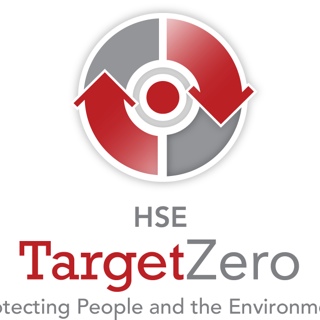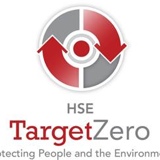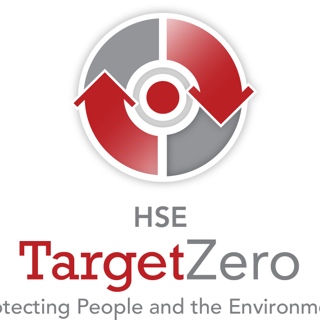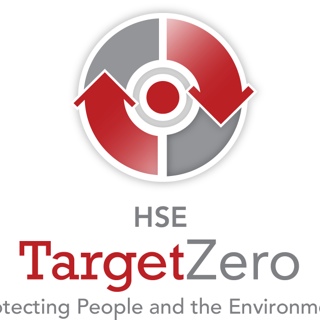Information
-
Project Name
-
Prepared by
-
Title
-
Project Manager
-
Conducted on
-
Add location
A. Confined Space Evaluation
-
1. Personnel informed of location and hazards of existing confined spaces (danger signs, verbal)
-
2. Determination made that work can not be completed without entering the confined space
-
3. Information obtained regarding the space (blue prints, potential hazards, energy sources)
-
4. Spaces classified as permit-required, alternative procedure, or nonpermit confined spaces
B. Training
-
5. Entrants, Attendants, and Entry Supervisor have completed confined-space entry training
-
6. Employees performing lockout/tagout procedures have completed LOTO training
-
7. Employees required to wear respirators have completed respiratory protection training
C Confined Space Entry
-
8. Completed permit or certificate posted at space entrance
-
9. Preentry briefing conducted
-
10. Entrants/Attendants verify that entry supervisor has authorized entry
-
11. Entrants/Attendants verify that all requirements of the permit or certificate have been satisfied
-
12. Atmospheric monitoring is conducted at frequency provided on the permit or certificate
-
13. Entry not permitted if an atmospheric hazard is detected above acceptable safe levels
-
14. Entrants evacuate space upon orders of the attendant or entry supervisor, when an alarm is sounded, or when a prohibited condition or dangerous situation is recognized<br>
-
15. Entrants/Attendant informs entry supervisor of hazards confronted or created in the space or any problems encountered during entry. <br>
-
16. Entry supervisor informs the owner of such issues in item 15 above
D. Entry Under a Confined Space Entry PERMIT (CSEP)
-
17. CSEP completed by entry supervisor
-
18. All expected hazards listed
-
19. Entry supervisor and Attendant assigned
-
20. Communication methods established between entrants and the attendant <br>
-
21. Cleaning requirements identified
-
22. Isolation requirements identified
-
23. Ventilation requirements identified
-
24. Protective equipment requirements
-
25. Rescue equipment requirements identified
-
26. Other requirements identified
-
27. Rescue and emergency procedures identified
-
28. Atmospheric monitoring requirements identified
-
29. HS&E manager approve use by signing (CH2M HILL CSEP only)
-
30. Entry supervisor authorized entry by signing
-
31. Authorized entrants have completed CSE training and attended preentry briefing
-
32. Only authorized entrants permitted to enter the space
-
33. Entry supervisor sign the CSEP indicating its cancellation
-
34. Problems encountered during the entry listed<br>
E. Entry Under An Alternative Procedure Certificate (APC)
-
35. APC completed by entry supervisor
-
36. All expected atmospheric hazards listed
-
37. Entry supervisor and Attendant assigned
-
38. Entry supervisor verifies that nonatmospheric hazards do not exist
-
39. Communication methods established between entrants and the attendant
-
40. Covers removed safely
-
41. Openings guarded from both fall hazards and from objects entering the space
-
42. Continuous forced-air ventilation positioned to ventilate the immediate areas where employees are working and continue until they have left the space<br>
-
43. Ventilation from a clean source of air
-
44. Atmospheric monitoring requirements identified .
-
45. Entry supervisor authorize entry by signing
-
46. Authorized entrants have completed CSE training and attended preentry briefing
-
47. Only authorized entrants permitted to enter the space
-
48. Entry supervisor sign the APC indicating its cancellation
-
49. Problems encountered during the entry listed<br>
F. Entry Under a Non-Permit Certificate (NPC)
-
50. NPC completed by entry supervisor
-
51. Entry supervisor assigned
-
52. Attendant or buddy assigned
-
53. Buddy remains in the space with the entrant
-
54. Entry supervisor verifies nonatmospheric hazards do not exist
-
55. Communication methods established between entrants and attendant or buddy
-
56. Entrants informed to exit the space immediately if hazards are observed
-
57. Atmospheric monitoring requirements identified
-
58. Entry supervisor authorizes entry by signing.
-
59. Authorized entrants have completed CSE training and attended preentry briefing
-
60. Only authorized entrants permitted to enter the space
-
61. Entry supervisor shall sign the NPC indicating its cancellation
-
62. Problems encountered during the entry shall be listed
G. Rescue
-
63. Entrants wearing body harness with attached retrieval line (lifeline)<br>
-
64. Other end of lifeline attached to retrieval device (when required) or fixed point outside space <br>
-
65. Mechanical retrieval device positioned at access point for vertical-type spaces > 5 feet deep
-
66. Rescue team established
-
67. Team members have completed confined-space entry training
-
68. Team members informed of the hazards that they may confront during rescue operations
-
69. PPE & rescue equipment necessary to conduct safe entry-rescue provided & readily available
-
70. Team members trained on rescue duties and proper use of PPE and rescue equipment
-
71. All team members trained in first aid & CPR, at least one member holding a current certification
-
72. Team has made simulated rescue from a space of similar configuration within last 12 months
-
73. Communication established & tested between the team & entrants, and emergency provider
-
74. Local emergency medical provider notified in advance of entries into PRCS
H. Atmospheric Monitoring
-
75. Qualified individual conducts atmospheric monitoring
-
76. Monitoring results documented on permit or certificate
-
77. Entrants do not enter until all monitoring requirements are completed
-
78. Monitoring equipment calibrated prior to use
-
79. Monitoring conducted for oxygen, flammability, and toxic air contaminants
-
80. Monitoring conducted bottom to top at five foot intervals
I. Pre-Entry Briefing
-
81. Entry supervisor conducts the briefing and discusses the follow items:
-
82. Explanation of the work to be performed and limitations
-
83. Explanation of actual and potential hazards, including the possible behavioral effects and signs, symptoms, and consequences of exposure<br>
-
84. Review of the control measure and atmospheric monitoring requirements, as specified on permit or certificate<br>
-
85. Review of entrant and attendant responsibilities
Corrective Action Taken
-
Corrective actions & dates corrected
-
Signature

















